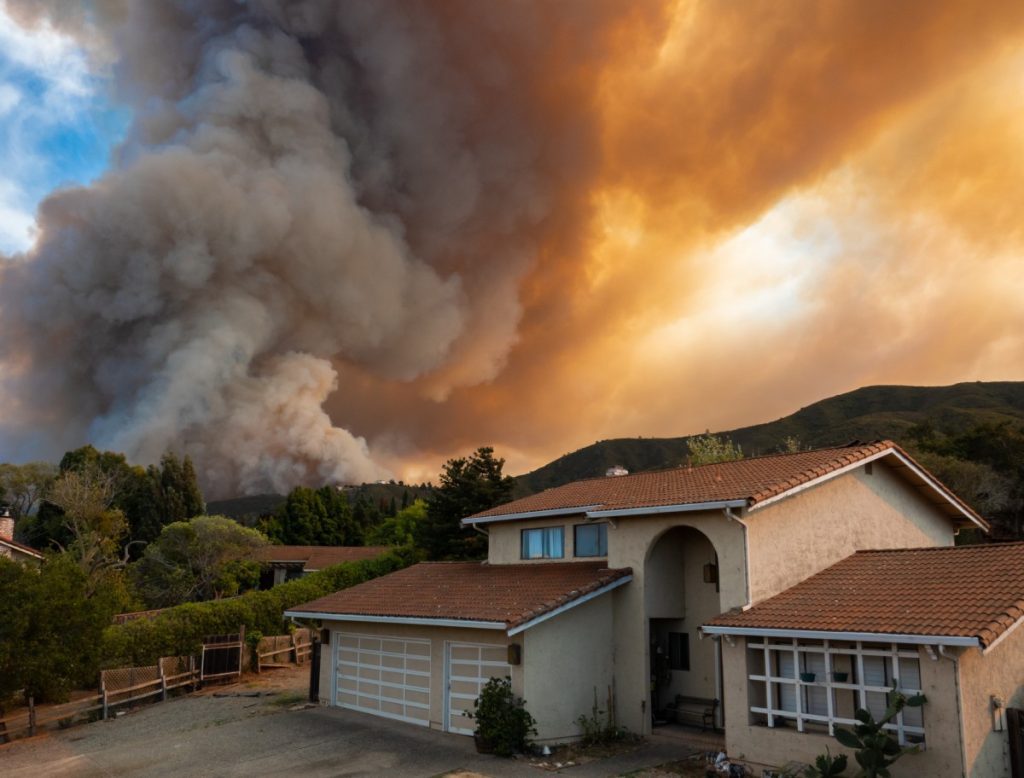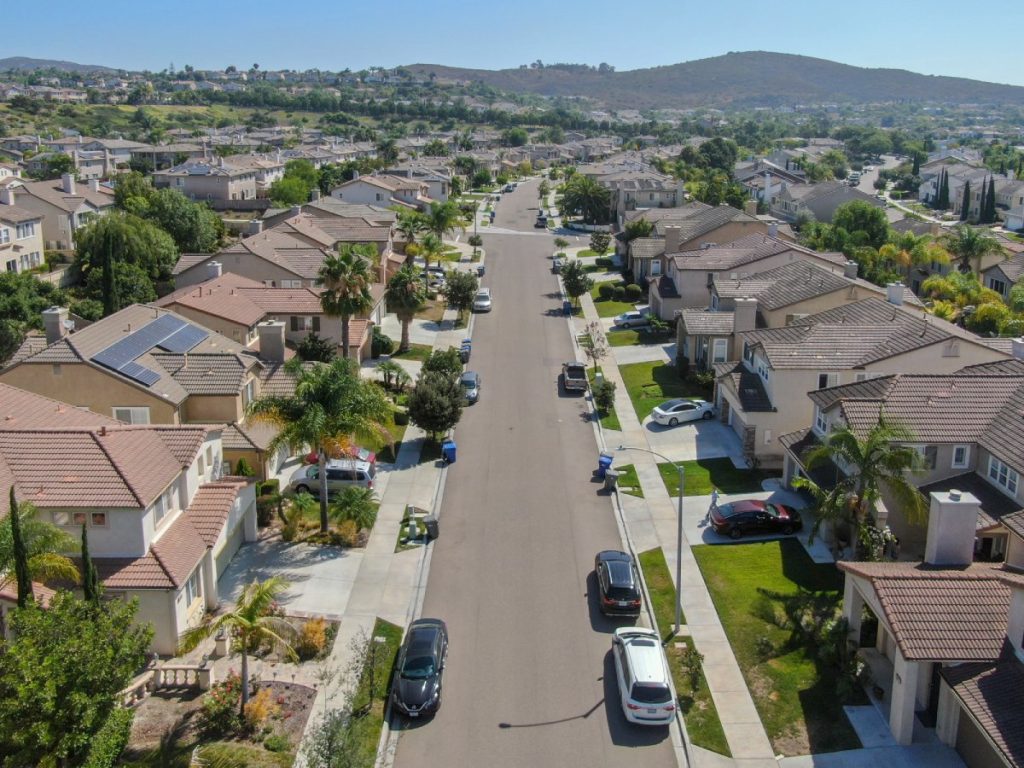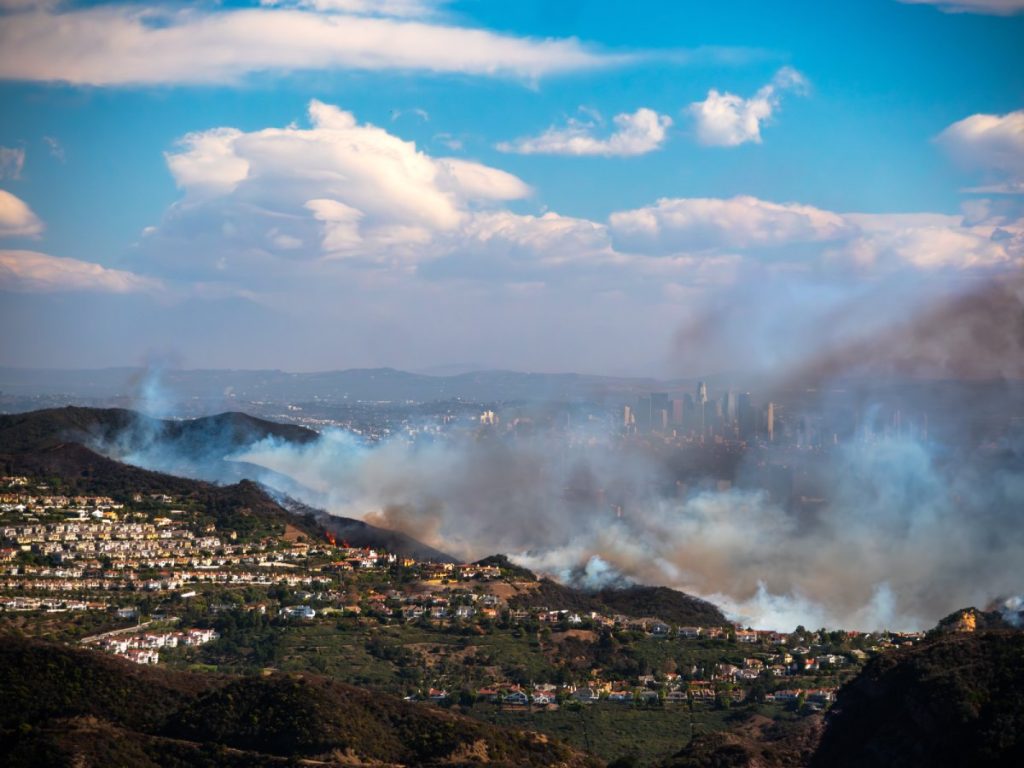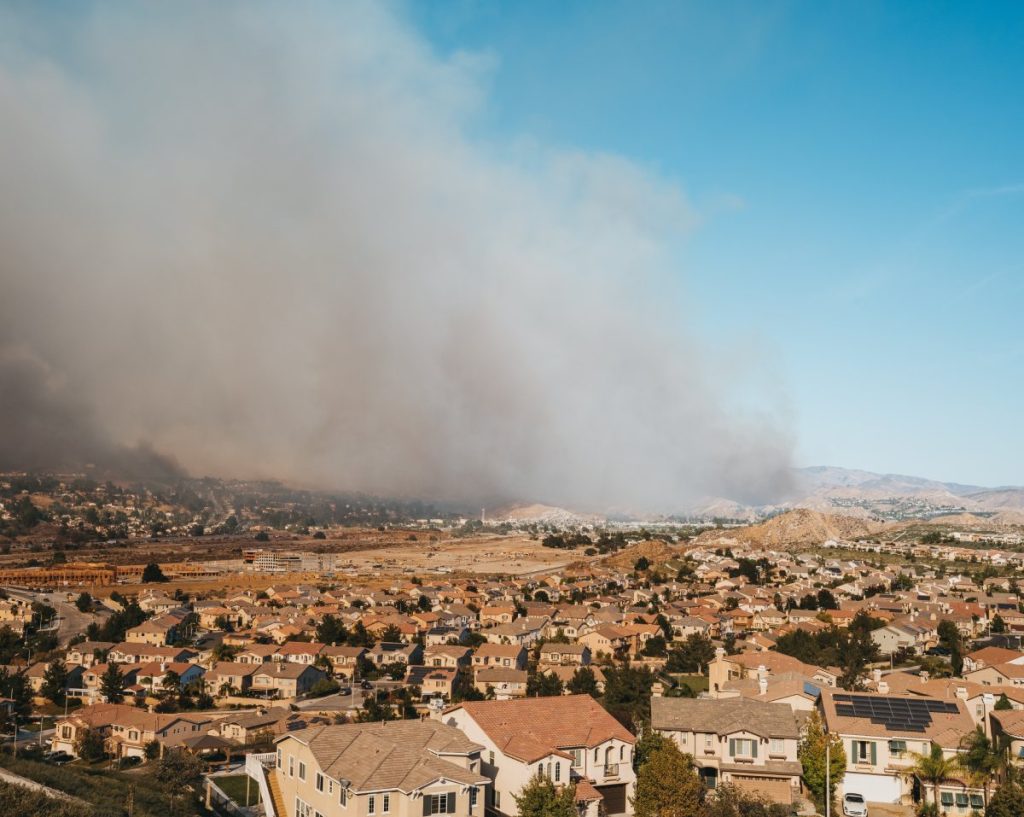Wildfires are no longer isolated events—they’re becoming a regular part of life for many homeowners across the United States, especially in California. Due to climate change, the fire season is growing longer and more intense, and destructive fires have immensely impacted property, air quality, and local economies. And these wildland fire events don’t just cause devastating property damage; they’re also impacting property insurance policies and premiums in high-risk areas.
This blog post explores the ripple effects of wildfires, how they relate to your property value and insurance, and what steps homeowners can take to stay protected.
A Glimpse Into the 2025 California Wildfire Season
The 2025 wildfire season in California was one of the most catastrophic in recent years and highlights the extreme risk of wildfire many homeowners face. The Los Angeles area endured multiple large fires, including the Palisades Fire, which burned over 23,700 acres, and the Eaton Fire, which destroyed 14,100 acres. Over 12,000 structures were destroyed, and the overall economic impact is estimated to range between $200 billion to $275 billion.
Other notable fires, like the Hughes Fire and the Sunset Fire, prompted mass evacuations and forced thousands to leave their homes. This growing threat underscores the need for better preparedness and insurance solutions for homeowners.
Wildfire Effects on Different Property Types
Wildfires leave home and business owners scrambling to rebuild their lives. They threaten property different types, including:
- Residential Homes: Wildfires can cause structural damage, destroy foundations, or lead to smoke, soot, and ash contamination, which can have health impacts and make many homes uninhabitable.
- Commercial Buildings: Alongside structural damage, businesses often face loss of inventory and short- or long-term business disruption, which further worsens the economic impact.
- Natural Landscapes: Wildfires contribute to soil erosion, loss of vegetation, and changes in ecological systems, causing long-term environmental effects. They can also threaten entire ecosystems by affecting soil fertility, water supply, and carbon dioxide emissions.
With the rising intensity of these wildfire events, it’s clear why preparedness and adequate insurance coverage are essential.
Why Wildfires Affect Property Insurance
Wildfires directly impact the property insurance and housing markets. Escalating claims prompt insurers to increase premiums, refuse renewals, or, in some cases, completely exit high-risk areas.
Policy Changes After Wildfires
Major insurers in California have revised their policies in response to wildfire damages. Many are opting to cancel or decline policies in fire-prone areas, citing heightened risks. Homeowners in such regions now face challenges in securing replacement coverage.
Premium Hikes
If you live in a region prone to large wildfires, you’ve likely experienced significant premium increases. Data shows that country-wide, homeowners in high-risk zones pay over 80% more in premiums than those in the lowest climate-risk zip codes.
Coverage Gaps in Fire Policies
While typical insurance policies may cover wildfire damage, limits, and exclusions often apply. Proper annual reviews of your policy are essential to ensure you’re adequately covered against fire risks.
Preparation and Mitigation Strategies
Reducing fire risk starts with preparation. Adequate planning and mitigation steps can protect your property and even help reduce insurance premiums.
Here are some basic steps to help defend your property.
1. Create Defensible Space
Defensible space is the buffer zone you create between your property and the surrounding wildland area. The California Department of Forestry & Fire Protection recommends three zones:
- Zone 0: This first zone extends 0-5 feet from your home and should be clear of all dead weeds, grass, and debris, and include gravel or pavers instead.
- Zone 1: This next zone extends 30 feet from your home and should be free of dead weeds, grass, and plants. It should also include regularly trimmed trees and maintained space between trees, shrubs, and flammable items.
- Zone 2: This zone extends 30 to 100 feet from your home. Here there should be horizontally spaced shrubs and trees, grass with a maximum height of 4 inches, and designated areas for exposed wood piles at least 10 feet clear from surroundings.
2. Use Fire-Resistant Building Materials
Upgrade to materials like fire-resistant siding, metal roofing, and dual-pane windows. These can increase your home’s chances of fire suppression. Recommendations include:
- Replace roofs with non-combustible materials like metal, tile, or asphalt shingles.
- Install ember-resistant vents to prevent wildfire smoke and embers from entering your home.
- Build fences and decks using treated wood or fire-resistant options.
3. Adopt Fire-Resistant Landscaping
Plant low-combustible vegetation, such as succulents, deciduous trees, and shrubs like rockrose and manzanita. Given California’s dry climate, it’s also important to select plants that are also drought-tolerant. This not only conserves water but also reduces the amount of dry, flammable material in your landscape. Regularly remove dead leaves, branches, and other debris that can fuel a fire, and incorporate non-combustible materials like gravel, stone, and concrete into your landscape to form additional buffers.
4. Leverage Statewide Resources for Mitigation
Programs by CAL FIRE and the USDA Forest Service are helping communities prepare by promoting prescribed burns, vegetation management, and fuel reduction projects. Taking advantage of these programs can enhance your property’s fire resistance.
Post-Wildfire Recovery
The aftermath of a wildfire can be overwhelming, but knowing the proper recovery steps can make a difficult situation more manageable.
1. Assess Property Damage
Inspect your property thoroughly, assess the damage, and take detailed photographs to support insurance claims. Identify potential health risks, such as mold or compromised air quality due to wildfire smoke.
2. Contact Your Insurance Provider
File your claim as soon as possible to jumpstart the recovery process. Be detailed in describing all damages. Paying careful attention not to miss deadlines greatly increases the likelihood of successful claims processing.
3. Leverage Available Assistance
- FEMA Individual Assistance provides financial relief for eligible homeowners recovering from disasters.
- Red Cross Shelters offer temporary housing for displaced families.
- Various state tax relief programs are also available for homeowners affected by wildfire damages.
- If you lack fire insurance, explore alternatives like the California FAIR Plan, which provides basic fire coverage for high-risk homeowners.
The Role of Insurance and Policy Review
Most homeowners’ insurance policies cover wildfire-related damages, such as structural repairs, temporary living costs during rebuilding, and replacing lost possessions. However, coverage varies, so carefully review your policy for high-risk areas or wildland fire damage exclusions.
It’s crucial to keep your policy updated. Conduct annual policy reviews to ensure adequate coverage and account for inflation and rising rebuilding costs to avoid being underinsured. Property values have shot up the last few years; a policy that offered adequate coverage five years ago might not be enough to cover your losses in 2025.
Affected By Wildfires? Get Support Today
Legal representation can make all the difference when your fire insurance claims are delayed, denied, or underpaid. Merlin Law Group specializes in helping homeowners get the compensation they’re owed. From assisting with denied claims to fighting unfair cancellations, our team supports people navigating the complex insurance landscape.
If you’ve experienced wildfire damage and are struggling with your insurance company, contact Merlin Law Group for trusted legal guidance. Our attorneys work tirelessly to advocate for policyholders like you.
FAQ
Can Ecosystems Benefit from Wildfires?
Yes, certain ecosystems rely on wildfires to promote new growth and maintain balance. Controlled burns, for example, rejuvenate forests and reduce overgrowth.
What Are the Effects of Wildland Fires on Human Health?
Wildfire smoke contains particulate matter and carbon dioxide, contributing to air pollution. This pollution can lead to short-term health effects like breathing difficulties and long-term risks such as respiratory illnesses and decreased lung function.
Are Wildfires Affected by Climate Change?
Absolutely. Rising temperatures, prolonged droughts, and changing weather patterns associated with climate change have intensified wildfire seasons worldwide.



